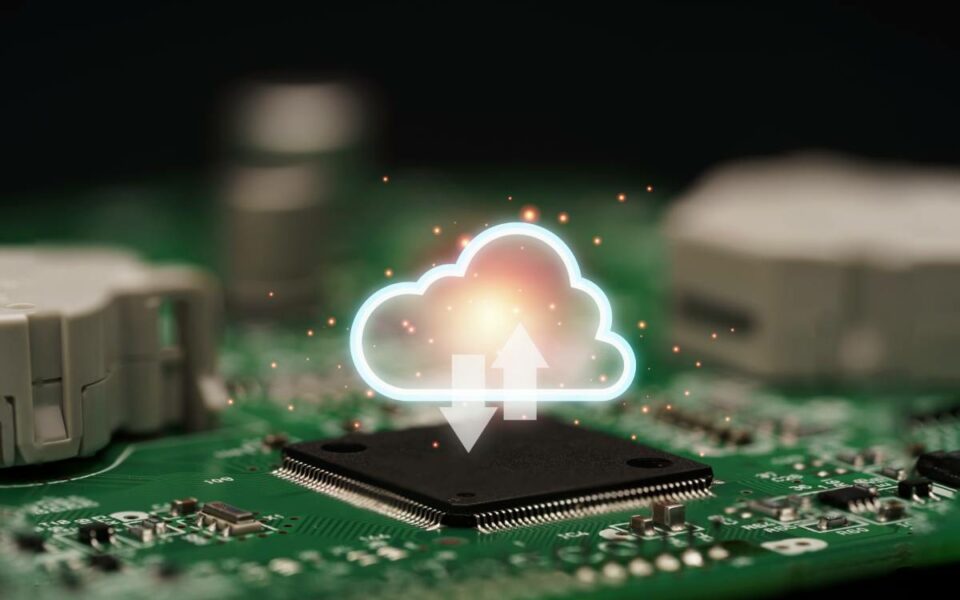
SEO in 2022. Strategies, trends and mistakes
1 December 2021
How will the May 2022 google core update affect your site?
20 June 2022
Data analytics, big data, AI and data science are popular keywords in the current world. Enterprises want to use data-driven models to streamline their business processes and make better decisions based on data analytics.
For decades, managing data essentially meant collecting, storing, and occasionally accessing it. This has all changed in recent years as companies seek critical insights that can be extracted from vast amounts of data, accessed and stored in countless locations, from data centers to the cloud. Given that data analytics – powered by such modern technologies as artificial intelligence (AI) and machine learning – has become a necessity, and in 2022 its importance will increase. Enterprises need to quickly analyze data – mostly unstructured – to find information that will inform business decisions. They also need to create a modern data environment in which this will happen.
Below are some trends in data management that will come to the fore in 2022
Scalable AI for business growth
Today’s businesses combine statistics, system architecture, machine learning implementations, data mining, and more. For consistency, it is important that these components are combined into flexible and scalable models to analyze large amounts of data at Internet scale. Here’s why you need to learn more about scalable AI.
Scalable AI by definition is the ability of algorithms, data models, and infrastructure to operate at the size, speed, and complexity required for a task. Speaking of data models and governance, scalability adds up to overcome issues of scarcity and high-quality data collection, and can be used to promote data sustainability by reusing and recombining capabilities to scale within business problem descriptions.
Scalability in ML and AI development will require setting up data production and deployment, creating extensible system architectures, and modern sourcing practices to maintain advanced ML and AI capabilities, leveraging rapid innovations in AI technologies.
Predictive analytics
Technology will become more immersive and embedded, and predictive analytics capabilities will be seamlessly connected to the systems and applications we interact with. Predictive analytics will drive use cases in next-generation applications.
Many companies are already using predictive analytics to apply machine learning or artificial intelligence algorithms, and to conduct data mining and predictive marketing to optimize their processes. These digital transformation technologies have transformed the previous approach into a more modern, integrated approach. As such, the increasing spread of the Internet, cloud technologies and connected systems will force companies to invest in predictive analytics.
Cloud automation and hybrid cloud services
The automation of cloud computing services for public and private clouds is achieved through artificial intelligence and machine learning. It brings a change in the way enterprises look at data science and cloud services, offering greater data security, scalability, a centralized database and management system, and data ownership at low cost.
Hyperautomation
Another dominant trend in data science in 2022 is hyper-automation, which started in 2020. By combining automation with artificial intelligence, machine learning and intelligent business processes, you can unlock a higher level of digital transformation in your enterprise. Advanced analytics, business process management, and robotic process automation are considered core concepts of hyperautomation. This trend is expected to grow over the next few years, with a greater focus on automating robotic processes.
Blockchain in data security
Blockchain is gaining popularity by providing secure transactions with minimal effort. Without having to rely on a third party, transactions are directly approved by the partner network. It allows users to store encrypted data in a secure, decentralized network. This facilitates data sharing and auditing while preventing unauthorized access. eCommerce companies have started to use blockchain for their online transactions, but they have also found applications in other fields, including healthcare and security.
With the development of the Internet of Things (IoT), the amount of data is growing exponentially, thus creating a potential threat to their security. Blockchain will be a good solution to this problem as it is considered tamper- and hack-proof. In addition, blockchain can also provide anonymous digital identities to IoT devices and enable data sharing between them.
The use of Big Data in the IoT
Internet of Things (IoT) is a network of physical things with built-in software, sensors and the latest technology. This allows various devices on the network to connect to each other and exchange information over the Internet. By integrating the Internet of Things with machine learning and data analytics, you can increase the flexibility of the system and improve the accuracy of the answers provided by the machine learning algorithm.
Improved cybersecurity
As most companies have been forced to invest in an increased online presence during the pandemic, improving cybersecurity will be one of the major trends in data science in 2022.
Deepfake, AI and synthetic data
Generative AI has quickly become embedded in the arts and entertainment industries. In 2022, we’ll see it break into many more industries and use cases. It has great potential when it comes to creating synthetic data to train other machine learning algorithms. Synthetic faces of people who never existed can be created to train facial recognition algorithms while avoiding the privacy concerns associated with using real people’s faces. It can be created to train image recognition systems to detect signs of very rare and rarely photographed cancers in medical images. It can also be used to create language-to-picture features, allowing an architect, for example, to create conceptual images of a building by simply describing in words what it will look like.
Increased use of natural language processing
Known as NLP, it originated as a subset of artificial intelligence. It is now considered part of the business processes used to study data to find patterns and trends. NLP is said to be used to instantly retrieve information from data repositories in 2022. Natural language processing will have access to high-quality information that will provide high-quality insights.
Not only that, NLP also gives you access to sentiment analysis. In this way, you will get a clear picture of what your customers think and feel about your company and competitors. When you know what your customers and target audience want, it’s easier for them to deliver the required products and increase customer satisfaction.
Data-driven customer experience
It’s about how companies take our data and use it to give us more and more valuable or enjoyable experiences. This could mean less friction and hassle in eCommerce, more user-friendly interfaces and front-ends in the software we use, or spending less time holding back and moving between different departments when contacting customer service.
Our interactions with companies are becoming increasingly digital which means that often every aspect of our engagement can be measured and analyzed to gain insights into how processes can be smoothed or made more enjoyable. This has also led to a drive to create a higher level of personalization of goods and services offered to us by companies. The pandemic, for example, has sparked a wave of investment and innovation in online retail technology as businesses scramble to replace the hands-on, tactile experience of brick-and-mortar shopping. Finding new methods and strategies to use this customer data for better customer service and new customer experiences will be the focus of many people working in data science in 2022.
Enterprises continue to face increasing pressure to adopt data management strategies that enable them to extract actionable insights from a wealth of data to make critical business decisions. Analytics will be central to these efforts, as will the creation of open and standards-based data networks that enable organizations to control all of this data for analysis and action.
The trends mentioned above are some of the most promising technologies that will change the landscape of Big Data and data analytics in the coming years. Companies must start investing in the latest technologies if they want to maintain a competitive advantage.
Data Science as well as Big Data will continue to be in the spotlight in the coming years. We will see more such solutions and innovations. The demand for data analysts or AI engineers will increase. The easiest way to embrace the latest changes in business is to hire a data analytics company.


